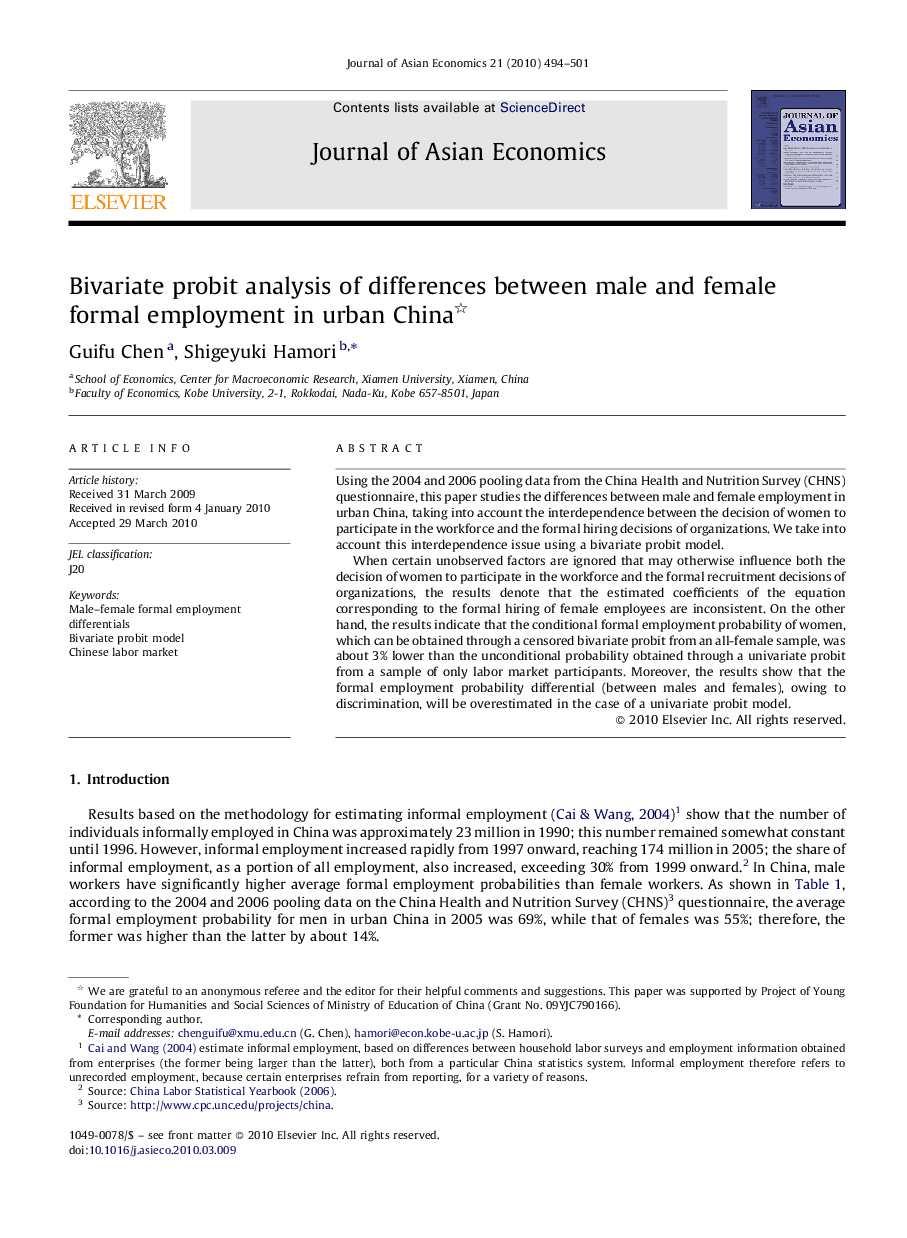| Article ID | Journal | Published Year | Pages | File Type |
|---|---|---|---|---|
| 5087619 | Journal of Asian Economics | 2010 | 8 Pages |
Using the 2004 and 2006 pooling data from the China Health and Nutrition Survey (CHNS) questionnaire, this paper studies the differences between male and female employment in urban China, taking into account the interdependence between the decision of women to participate in the workforce and the formal hiring decisions of organizations. We take into account this interdependence issue using a bivariate probit model.When certain unobserved factors are ignored that may otherwise influence both the decision of women to participate in the workforce and the formal recruitment decisions of organizations, the results denote that the estimated coefficients of the equation corresponding to the formal hiring of female employees are inconsistent. On the other hand, the results indicate that the conditional formal employment probability of women, which can be obtained through a censored bivariate probit from an all-female sample, was about 3% lower than the unconditional probability obtained through a univariate probit from a sample of only labor market participants. Moreover, the results show that the formal employment probability differential (between males and females), owing to discrimination, will be overestimated in the case of a univariate probit model.
